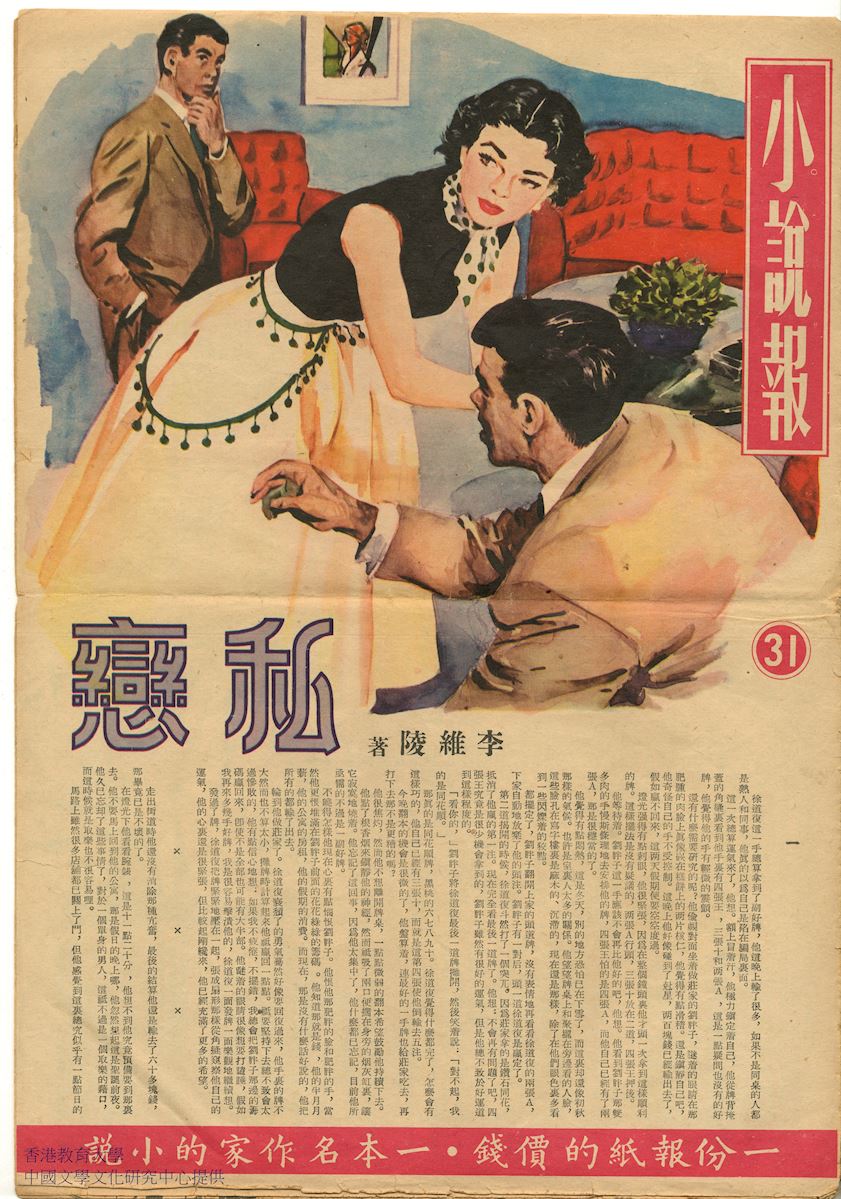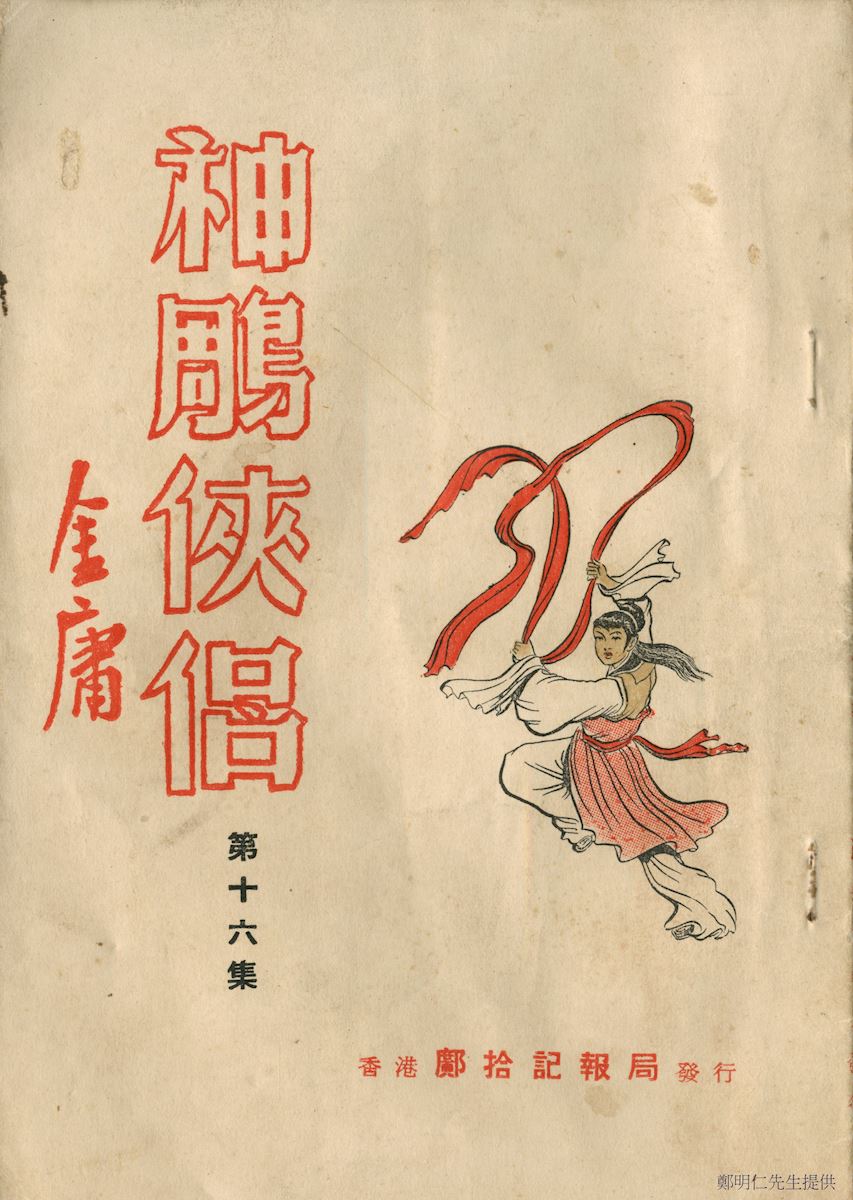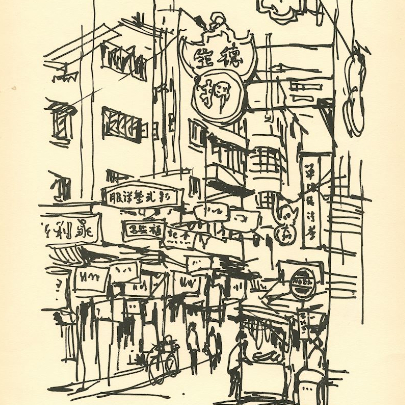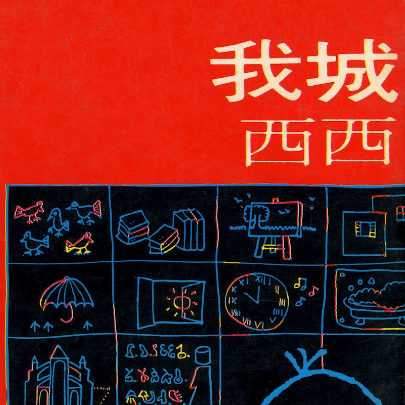Passing by the World| Wonderland of Wuxia| Important moments of Hong Kong literature| Stories of Hong Kong Literature
Alongside the blossoming of serious literature, popular literature also proliferated in both output and quality during the first two postwar decades. These were the golden years of Hong Kong literature, with '3-cent' pulp-fiction, sam-kap-dai ('3-styles'), romance, and wuxia (martial hero) genres flourishing in step with the steadily growing number of publishing houses and newspapers.
Passing by the World
(1).jpg)
That's what mostly happens: people are desperate whenever there is profit involved; those accusing someone of luring, may sometimes be accused of luring others.
── Broker Lai's Broker's Diary (1947)
The absorption into the colony in the 1950s of large numbers of new immigrants fueled demand for new leisure and recreation outlets, ushering popular literature into its golden age. This was the heyday of sam-kap-dai ('3-styles') and '3-cent' pulp-fiction novelettes. The former interlaced colloquial Chinese, classical Chinese, and Cantonese verbiage into a comfortably familiar, 'homegrown' literary genre. The latter were novelettes covering a kaleidoscopic range of themes and topics that were mass-printed by newspaper and magazine publishers and sold for 3 cents a copy. These novelettes were short and easy to read, and featured enticingly illustrated covers. This fusion of the literary arts and modernity captured the public's imagination and propelled many formerly obscure authors into the limelight.
From early narrative songs (naamyam) and traditional 'wooden fish songs', to songs penned to be wistfully sung by women of the evening, to latter day popular novels – all are colored by themes of love and drama. Popular literature's profuse diversity reflects the city's over-the-top flourish and romantic charms. Many of its popular literary works were later repackaged for the silver screen, live theater performances, and radio plays, further fanning the flames of Hong Kong's cultural renaissance. Visitors to the city took news of its popular literature far and wide, opening a new window for us all to see, interpret, and understand Hong Kong.
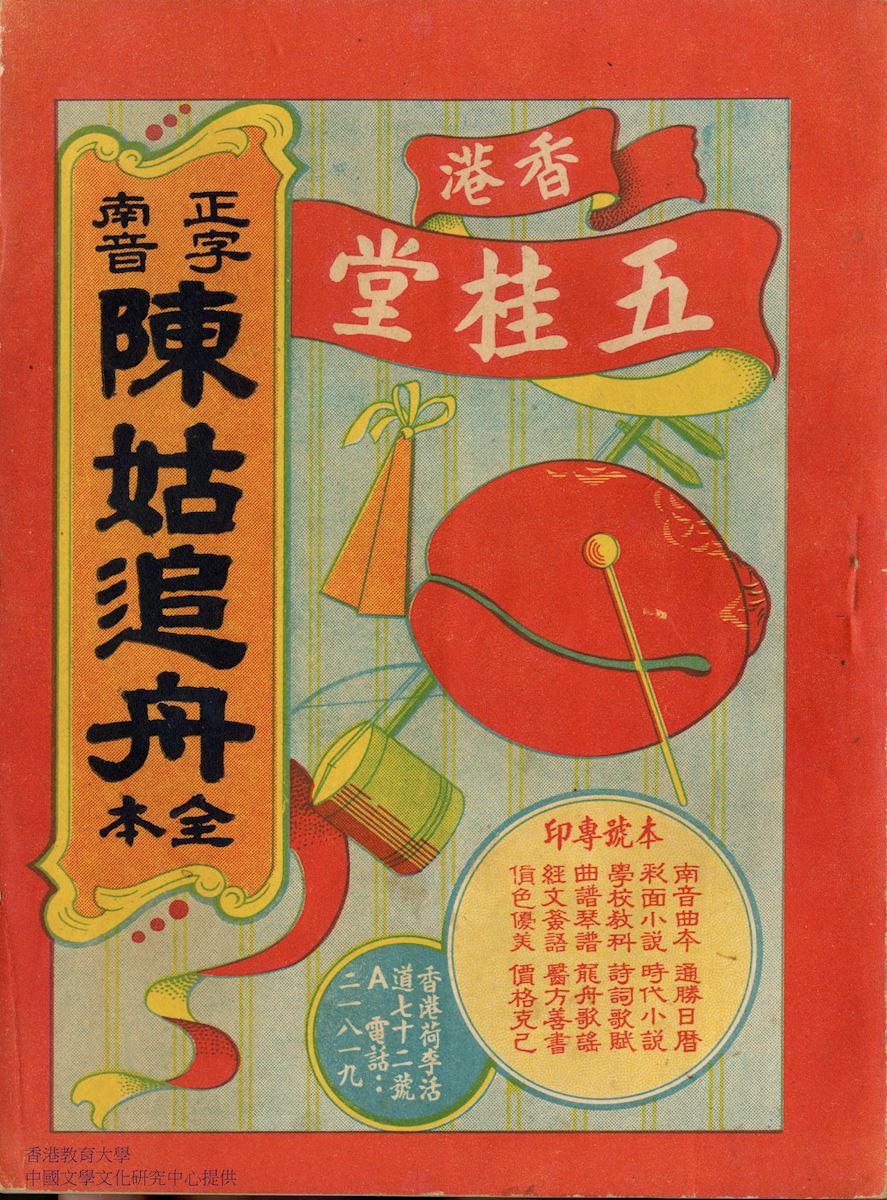
▲ “Zheng Zi Nan Yin: Chen Gu’s Boat Chase” / Hong Kong: Wu Gui Hall / 1950
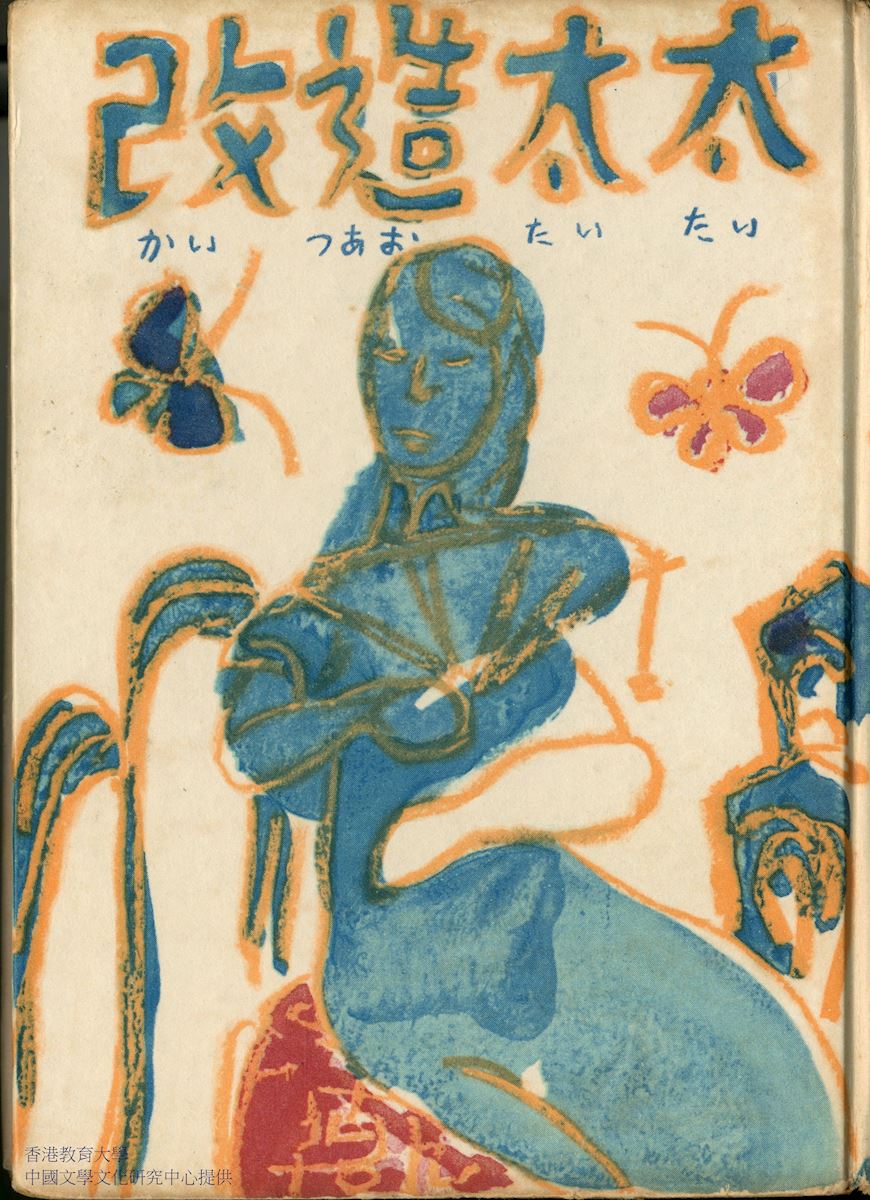
▲ Written by Huang Tian-Shi, translated by Otsuka Tsuneo, Sun Yu-Shan “Better Your Better Half” / Tokyo: Literature Publication / 1953
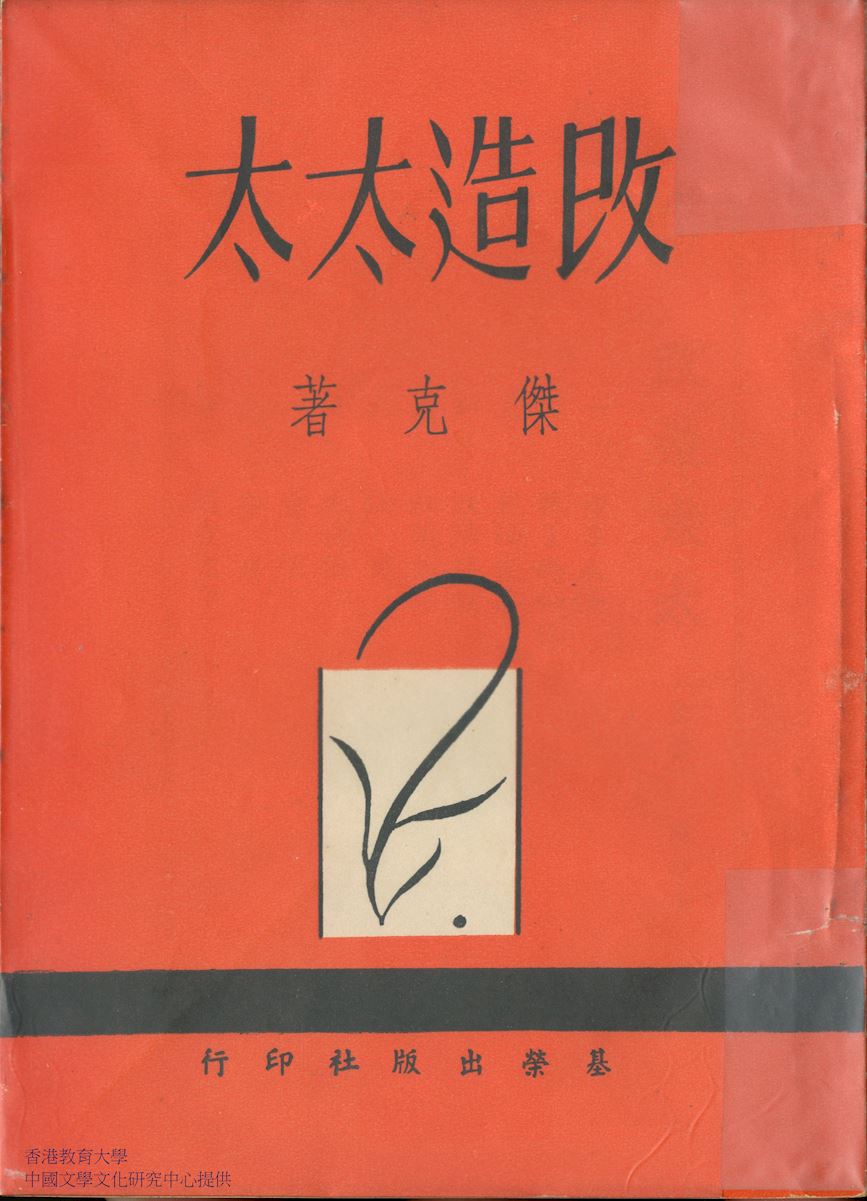
▲ Jieke's Better Your Better Half.
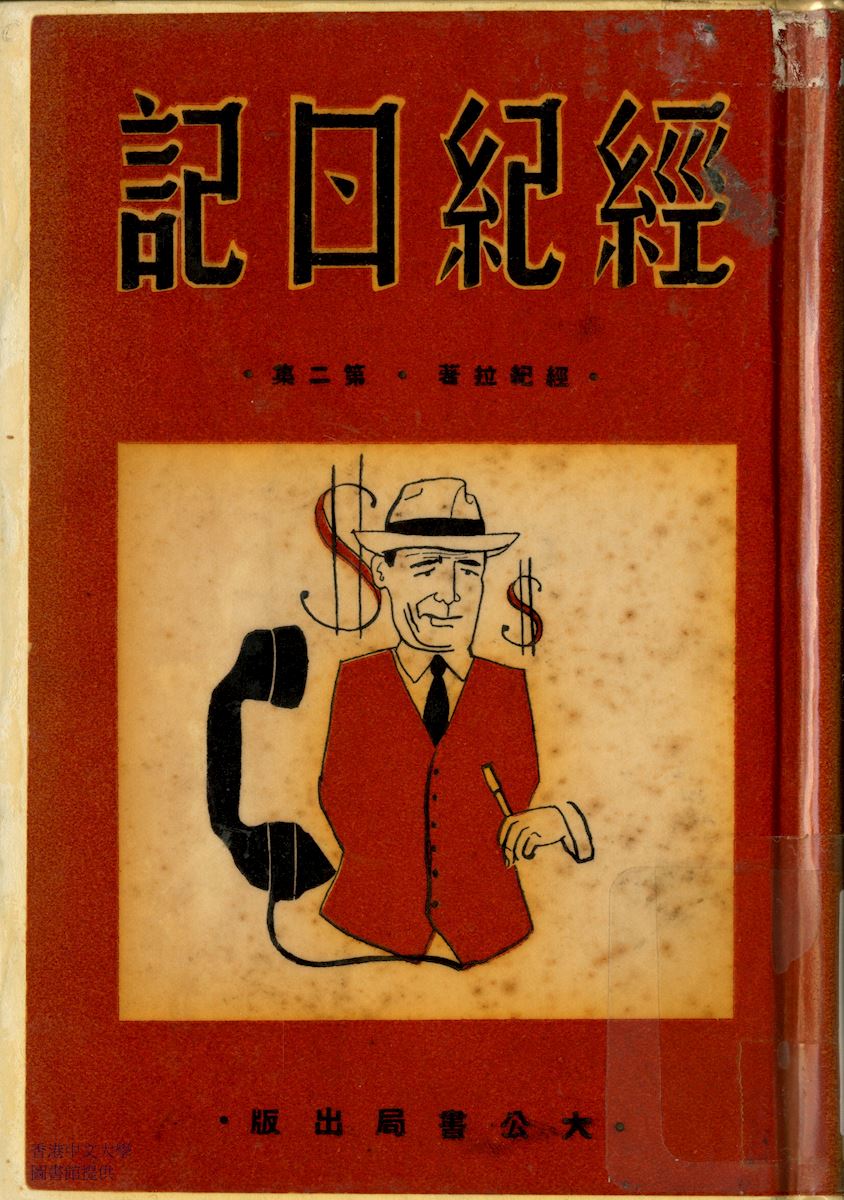
▲ Broker Lai's Broker's Diary.
.jpg)
▲ My Name is Gao “Zhu Bajie Tours Hong Kong” Newspaper clipping / Hong Kong “Sing Pao Daily News” / 1968-1969
▲ Li Wei-Ling “Secret Love” / Hong Kong: Neon Publication / December 1956
Wonderland of Wuxia
(1).jpg)
Gratitude and grudges exist wherever there are people; and where there are gratitude and grudges, there will be Jianghu; and people are Jianghu.
── Jin Yong's The Smiling, Proud Wanderer (1967)
A championship competition between two martial art schools in January 1954 inspired author Liang Yusheng (1924-2009) to pen Dragon and Tiger Fight Jinghua, the pioneering novel of the wuxia (martial hero) genre. The serialized novel The Book and the Sword by Jin Yong, first released in 1955, was received with great public acclaim soon after. Stories in the wuxia genre, suffused with Chinese cultural elements, combined Confucian, Taoist, and Buddhist aesthetics with the thrilling unpredictability of traditional martial talent. Each martial faction's carefully honed craft was woven into an expansive literary landscape in which chivalry and honor prevailed.
Whether conveying time-honored morals or describing the adventures of inspirational paragons of martial heroism, the cultural messages and imagined landscapes of these stories were fervently devoured by Hong Kong readers. The 'spirit' of wuxia had a long-lasting impact on ethnic Chinese around the world as well as on the development of Hong Kong's performance theater and movie industries. Popular tales were adapted for stage and film productions, and wuxia feature films are still widely shown and enjoyed today. Wuxia novels should be considered one of the most important of Hong Kong's popular literature genres.
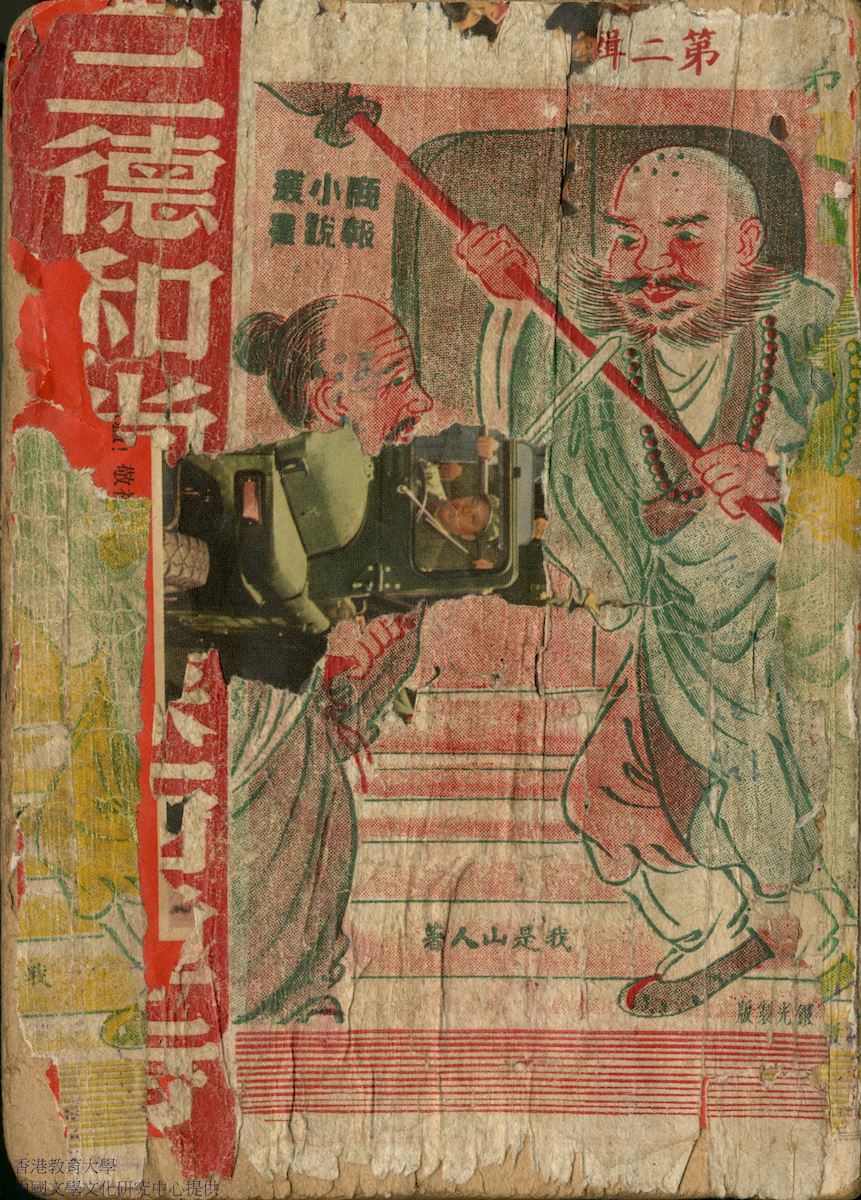
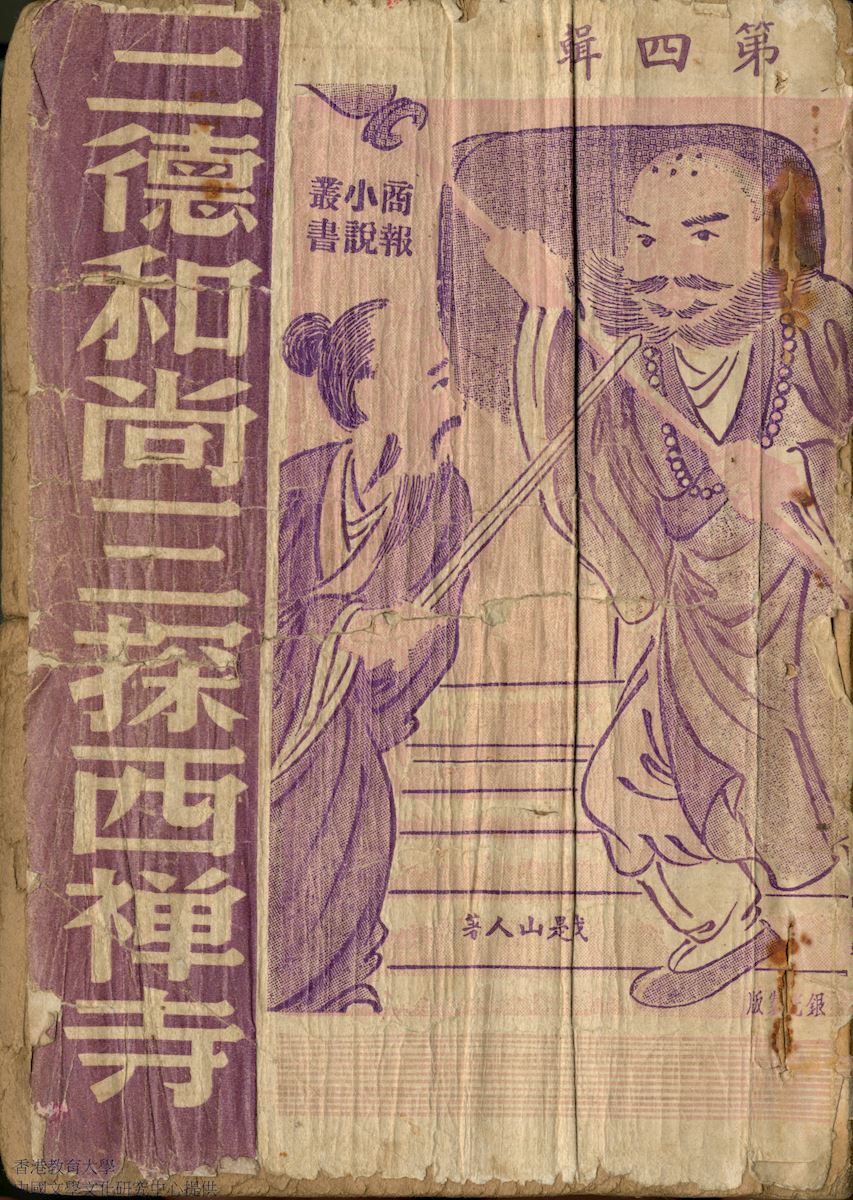
▲ I am a Hermit “Monk Sande's Three Visits to Xichan Temple” / Guangzhou Commercial Daily / 1948
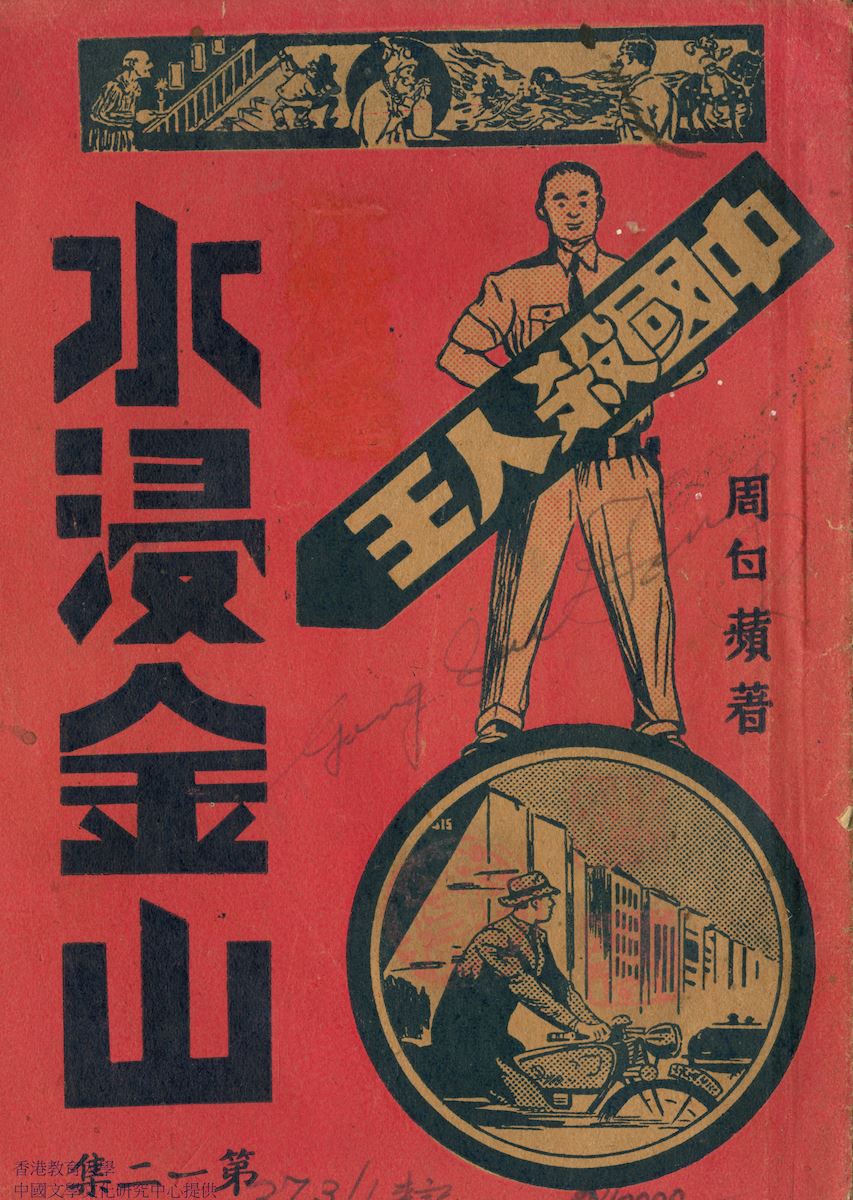
▲ Zhou Bai Ping “Chinese Killer: Jinshan Flood” / 1939
▲ Jin Yong's The Return of the Condor Heroes
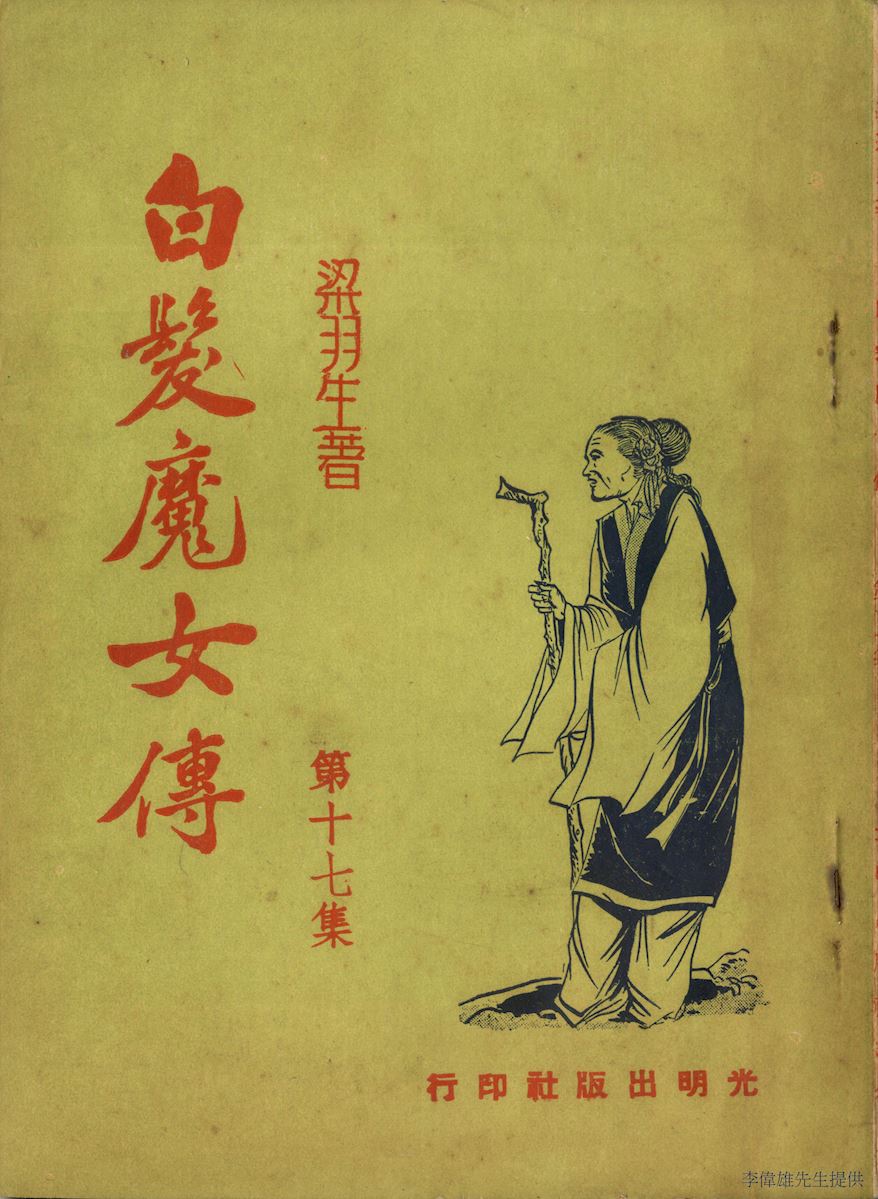
▲ Liang Yu Sheng's "The Bride with White Hair "
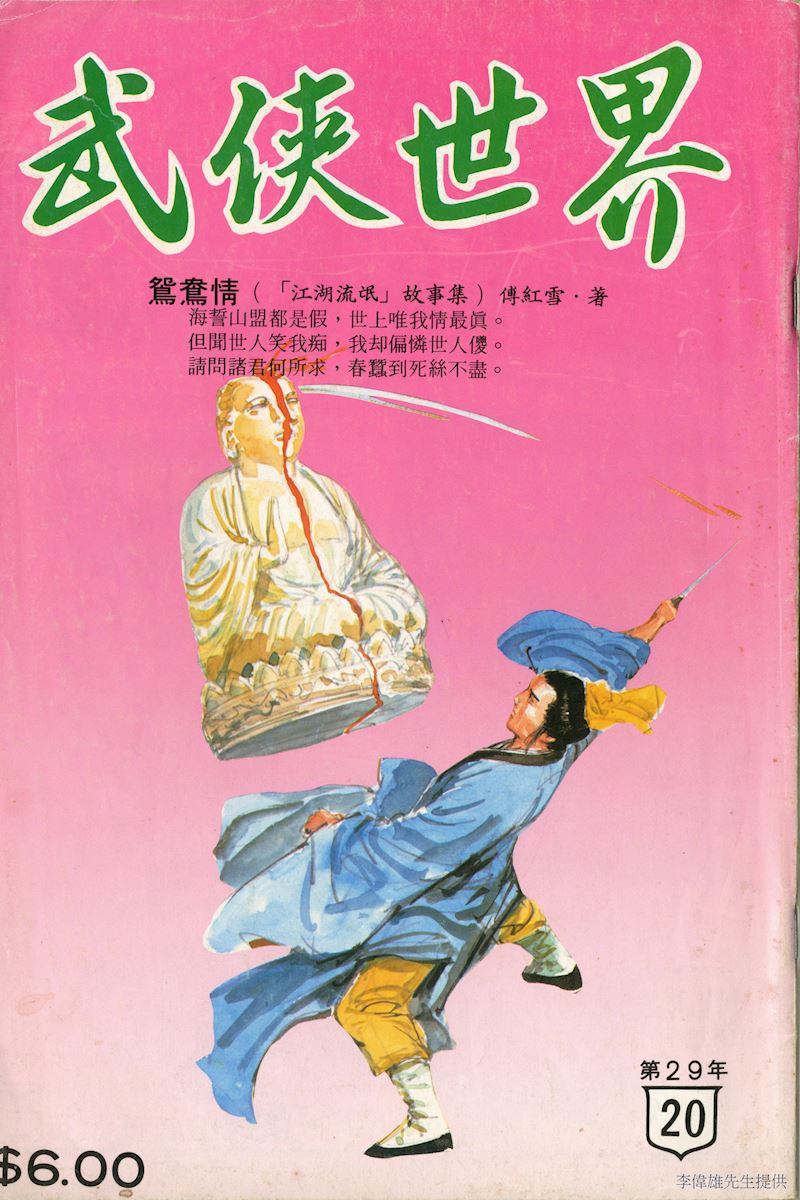
▲ “ Martial Arts World” 29th Year, Issue 20 / 1987
Important moments of Hong Kong literature
1950
The "Dollar culture" started to intervene, and Hong Kong became the window for exchanges and mutual observations between the East and West in the background of the Cold War.
1952
July, The Chinese Student Weekly, one of the representative publications of the dollar culture, published its first issue. It had a far-reaching impact on the literary development of Hong Kong and even Southeast Asia.
1955
February, the serial publication of Jin Yong's The Book and the Sword started, setting off a wave of new “wuxia” (martial hero) novels in Hong Kong.
1956
March, Literary Current Monthly Magazine, edited by Ma Lang, published its first issue, which became one of the pioneers of modernism in post-war Taiwan and Hong Kong. 1962 September, Lau Yee Cheung's The Drunkard began its serial publication, and was reputed to be "China's first stream of consciousness novel."
1963
March, Cape of Good Hope (好望角) published its first issue, marking the undertaking of modernism by locally born literary youths.
Stories of Hong Kong Literature
Q:The new martial arts novel wave set off by writers Liang Yu Sheng and Jin Yong in the 1950s actually originated from a duel in Macau.
A:
The new martial arts novel wave set off by writers Liang Yu Sheng and Jin Yong in the 1950s actually originated from a duel. On January 17, 1954, two martial arts masters, Chen Ke-Fu and Wu Gong-Yi from the White Crane and Taiji, vowed to challenge each other in the name of charity and disaster relief. The unprecedented grand event attracted more than fifteen thousand Hong Kong people traveling to Macau. Though the duel ended in a draw, people from Hong Kong and Macau at that time wanted more, and the event remained a hot topic. Chief editor of New Evening Post, Luo Fu, took advantage of the craze by inviting Liang Yu Sheng to write The Duel of Dragon and Tiger, and then published it serially. Several plots coincided with the actual duel, and it was very well received after its release. The following year, Luo Fu invited Jin Yong to write a martial arts novel, The Book and the Sword, which was serialized in New Evening Post.
After the serial publication, Jin Yong's first martial arts novel was very well received, setting off a wave at home and abroad. The martial arts novel therefore became an important literature genre of Hong Kong. The duel actually affected the entire direction of Hong Kong's literary and cultural development, which was unforeseen at that time.

